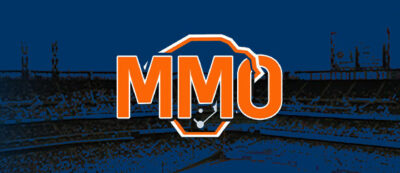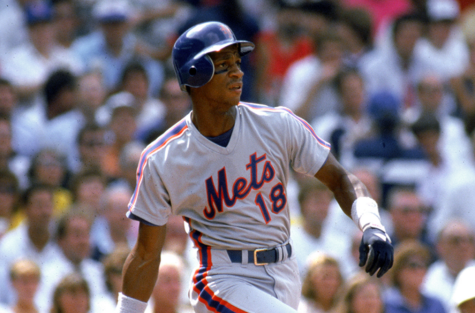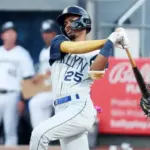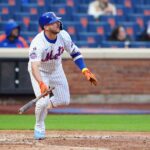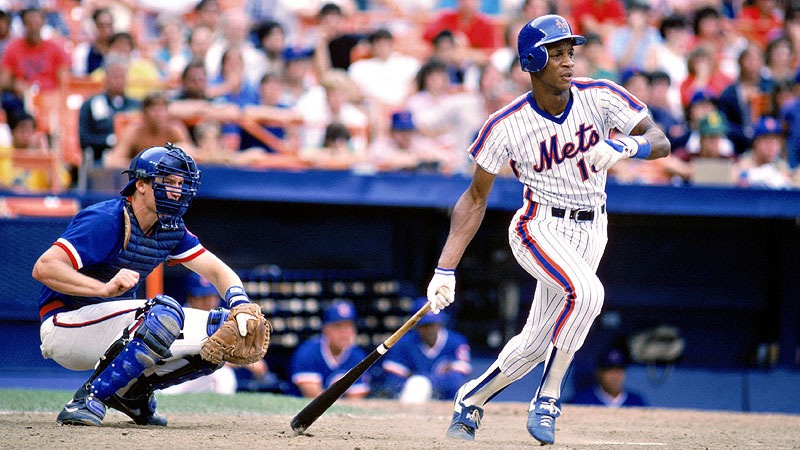
Daryl Strawberry.
The Dodgers may be long gone from New York City, but the remnants of the franchise remain. Not only does the primary color, but also the Jackie Robinson Rotunda at Citi Field as a tribute to Ebbet’s Field as well as the continuous memorials around the borough of Brooklyn. Two of the biggest markets in the country have been welcome attractions for many players.
Here are a few.
Duke Snider – Dodgers (1947-62), Mets (1963)
Known as the “Duke of Flatbush” while a member of the ever-popular Brooklyn team of the 1950s, Snider was one of few who probably didn’t mind the move west. Born in Los Angeles, he made his Hall of Fame career with Dodgers and was a part of the first two World Championships.
Injuries and the passage of time relegated Snider to part-time status by 1962. He came to the Mets and back to New York City for ’63, where he achieved his milestone 2,000th hit and 400th home run. Snider appeared in 129 games, slashing .243/.345/.401, with 14 home runs and 45 RBIs. He was the team’s lone representative at that year’s All-Star Game.
Bobby Valentine – Dodgers (1969-72), Mets (1977-78)
Bobby V’s ties to the Dodgers go well beyond his playing days, which began in their farm system. A prized two-sport athlete, Valentine was managed in Triple-A by Tommy Lasorda—a relationship that lasted well into his days piloting the Mets. Bobby saw his career derailed by injuries, both in the minors and later with the California Angels, but he spent time in Queens as a player before returning as a coach in the 1980s and then as skipper beginning in 1996.
Almost 20 years prior, Valentine wed Mary Branca—the daughter of the Brooklyn Dodgers pitcher famous for giving up the “Shot Heard ‘Round the World” to Bobby Thomson.
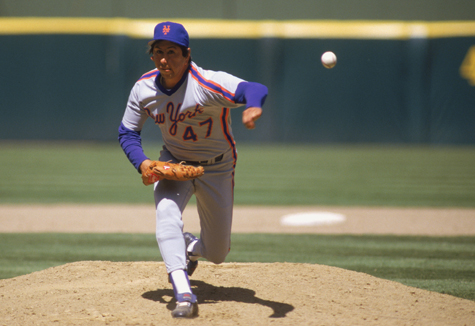
Jesse Orosco.
Jesse Orosco – Mets (1979-87), Dodgers (1988, 2001-02)
No player took the mound more often than Jesse. And for all the uniforms he wore, he sported Mets’ colors the most. It’s also where he enjoyed his greatest successes, being at the center of the celebrations for the 1986 LCS and World Series triumphs. But by 1987, he’d worn out his welcome in New York.
Orosco was part of a trade that eventually landed him in Los Angeles. In his first year, with his new team facing his old team for the pennant, Jesse made appearances in the postseason at Shea Stadium. Once he practically toured the majors at the turn of the century, he came back to the Dodgers at age 44—and yet was three teams and two years away from retirement.
Darryl Strawberry – Mets (1983-90), Dodgers (1991-92)
He has the distinct honor of being on each of these three features, having been the only one to play for all four teams that occupied New York City. Strawberry’s run as a Met ended when he tried free agency and the hometown Dodgers offered enough money.
He returned to Shea on May 7, 1991—filled with plenty of cheers, boos, and “Darr-yl” chants. When he homered off Frank Viola to left-center, the mixed feelings continued. Darryl nearly carried the ’91 Dodgers into the playoffs but followed that up with a disappointing effort in ’92 and was soon gone.
No matter where Strawberry ended up for the remainder of his career, L.A., San Francisco, or the Bronx, he was always attached to the Mets.
Orel Hershiser – Dodgers (1983-94, 2000), Mets (1999)
After what Hershiser did to the Mets in the 1988 NLCS, the least he owed the franchise was some success in New York. It was at the tail end of his career, far from the inhuman dominance he displayed during the title-winning season of ’88, but his veteran presence played a key role in the Mets’ first postseason appearance since that playoff loss to Los Angeles 11 years prior.
Hershiser’s most notable effort in a Mets uniform came in Game 5 of the NLCS against Atlanta. Just about everyone pitched in this 15-inning epic, but Orel stood out by preventing the Braves from taking the lead in the fourth and fifth innings.
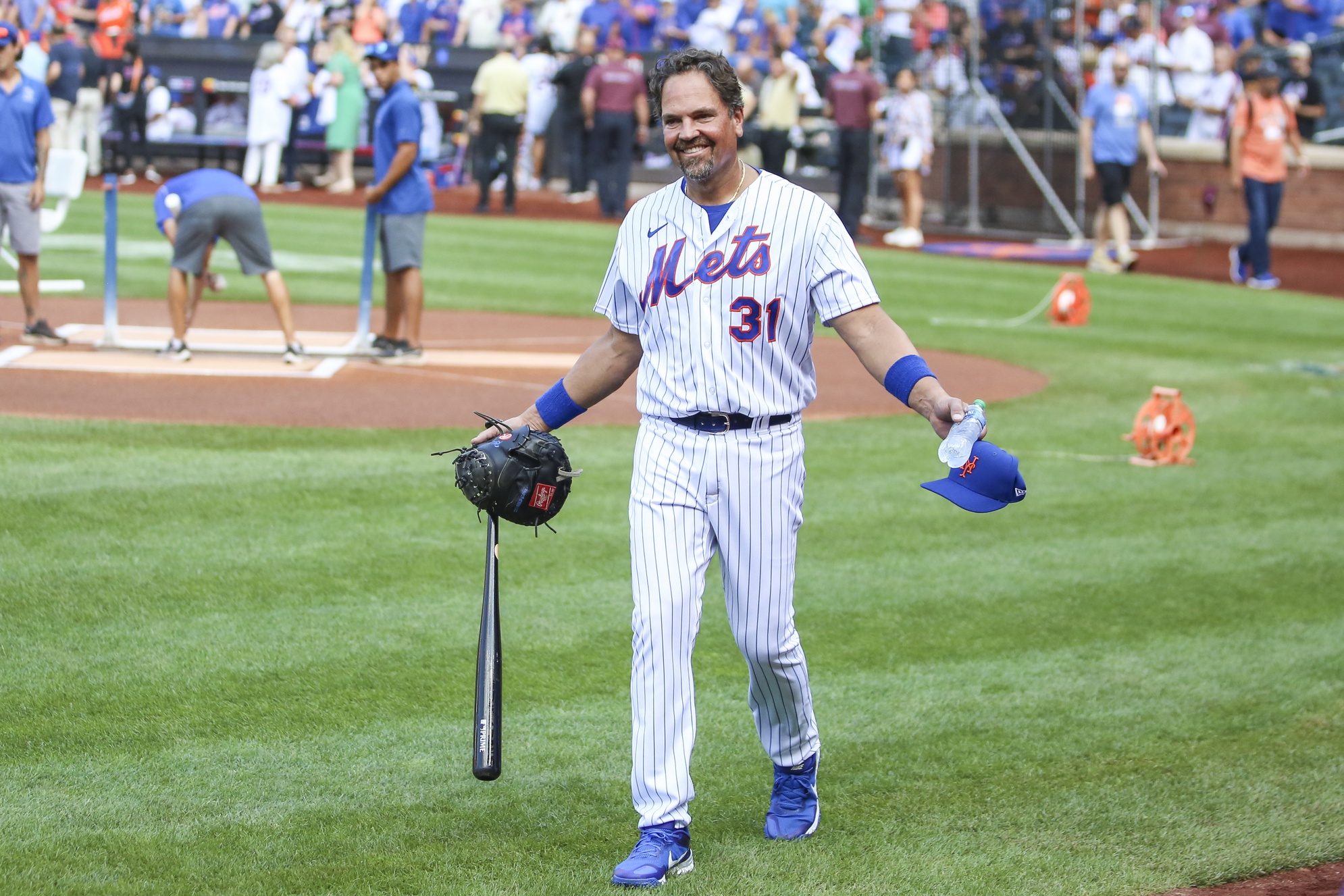
Mike Piazza. Wendell Cruz-USA TODAY Sports
Mike Piazza – Dodgers (1992-98), Mets (1998-05)
Most take five hours to get from L.A. to New York. For Piazza, it took a whole week. His brief interlude in Florida aside, the greatest hitting catcher made his mark with these two clubs. His best statistical years might have been with the Dodgers, but Piazza will always be remembered as a Met.
If his Hall of Fame status and his retired number at Citi Field aren’t enough proof, it’s the postseason appearances, the World Series trip, and a number of unforgettable moments that made him a Big Apple baseball legend. Piazza’s Mets stats weren’t bad, either: a 136 OPS+ and 220 homers in six-and-a-half seasons.
Hideo Nomo – Dodgers (1995-98, 2002-04), Mets (1998)
He was a little bit of Ohtani—half of him, at least. Nomo was arguably the first player from Japan to really reach stardom in the major leagues. The starter for the 1995 All-Star game, Nomo never enjoyed the same success despite throwing two no-hitters (in 1996 and 2001).
His Dodger days were done when the team was ready to ship off players in the midst of ownership change. Nomo, after starting poorly, was on the list. His “tornado” delivery landed in New York, although he continued to struggle. Nomo made 17 appearances with an 87 ERA+ and a WHIP of 1.439.
Shawn Green – Dodgers (2000-04), Mets (2006-07)
On the Dodgers before the Mets and on the Blue Jays before both, Green’s third career stop would be his last. He was not nearly the same player who knocked out 40-plus homers three times. But when the Mets acquired him in August of ’06, he filled the role-player part very well.
Green played in just 34 games that year, yet he had a big part in one of that season’s most unforgettable moments in the opener of the Division Series against Los Angeles. Who’s the guy on the receiving end of this spectacular play? Just look below before he tags you out twice.
Paul Lo Duca – Dodgers (1998-04), Mets (2006-07)
After enjoying success with one former Dodger catcher, the Mets figured they’d get another. Much like Mike Piazza, Lo Duca opened his major-league career in L.A. He played sparingly until 2001, when emerged as a leader behind the plate as well as 25 homers and 95 RBIs at the plate. Much like Piazza, Lo Duca briefly went to the Marlins. Unlike Piazza, it was for more than a week (the whole 2005 season, in fact).
With the Mets, Lo Duca was one of many who provided a veteran presence. He was also a very steady bat between José Reyes and Carlos Beltrán. Of the star names that made up the 2006 division-winning club, Lo Duca might have been the most unsung (even if he was an All-Star himself).
